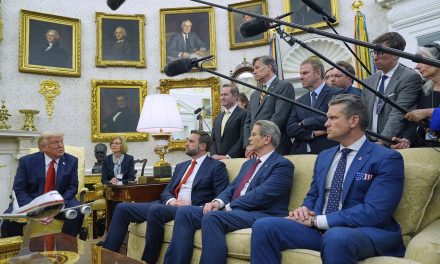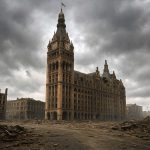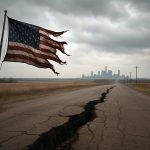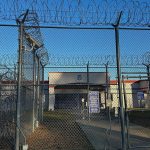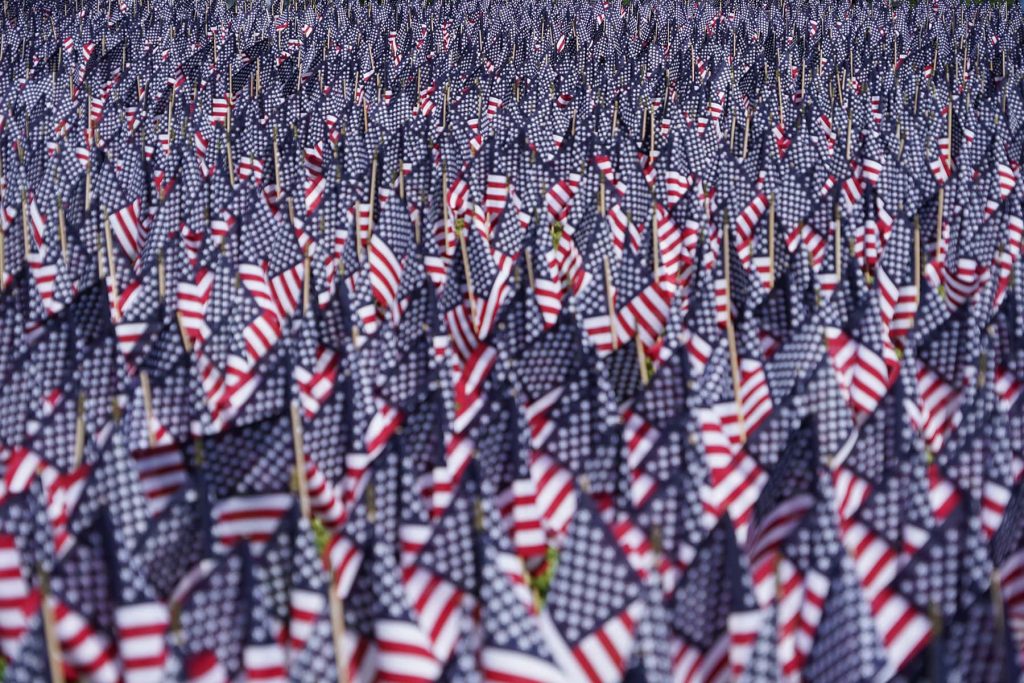
Calls for a Second American Civil War have become a persistent theme among extreme factions aligned with Donald Trump, particularly within the Make America Great Again (MAGA) movement.
These individuals frequently evoke the imagery of 1861, imagining a new conflict that they believe would pit Red states against Blue states in a battle for the nation’s future.
However, their comparison to the first Civil War is historically and structurally flawed. A modern American civil war would not resemble the geographic simplicity of North versus South. Instead, it would be a fragmented, chaotic, and deeply internalized conflict that would devastate communities from within.
The Civil War of 1861 was primarily a conflict between organized state governments. Eleven Southern states seceded from the Union to create the Confederate States of America with a unified military and political leadership.
Battle lines were clearly drawn along state boundaries, and while divided loyalties existed within some regions, the basic conflict remained territorial. The Confederate and Union forces fought pitched battles, occupied territory, and maintained formal governmental structures throughout the war.
In contrast, the political and cultural divisions of 2025 are not cleanly separated by state borders. Every state, no matter how strongly Republican or Democratic, contains significant populations of both pro-Trump and anti-Trump citizens.
Rural areas often trend conservative, while urban centers trend liberal, even within the same state. In many cases, counties are more politically polarized than states. This reality would make a Second American Civil War a far messier and more localized phenomenon, without the neat divisions or state-based allegiances seen in the 19th century.
MAGA and the extreme Right’s fixation on repeating the Civil War ignores these realities. Their vision of clean secession, orderly battle lines, and traditional military glory is a fantasy that fails to account for the granular political geography of the United States today.
Rather than states lining up behind opposing flags, any modern conflict would pit neighbors against each other, fracture law enforcement and military units, and cause widespread humanitarian catastrophe with no clear end.
A Second American Civil War would be shaped by several defining characteristics, none of which resemble the clean break of 1861. Each of these factors would dramatically transform the nature of any internal conflict in the United States.
These include the absence of front lines, localized urban-rural conflict, fragmented allegiances, the prevalence of guerrilla warfare, mass civilian displacement, an intense media and propaganda battle, international interference, and economic collapse.
NO CLEAN FRONT LINES
Modern America is politically interwoven. Red counties and blue cities are often located within the same states, creating a patchwork of political enclaves. For example, Wisconsin, a quintessential swing state, encompasses liberal urban centers like Madison and Milwaukee alongside conservative rural regions. Similarly, even California, often perceived as a liberal bastion, has strongly conservative inland areas. Fighting would not occur across clear state lines but within states, cities, and even neighborhoods. Battles for control would focus on transportation hubs, critical infrastructure, and communications networks rather than traditional territorial conquest.
LOCALIZED URBAN-RURAL CONFLICT WOULD DOMINATE
Urban centers, where anti-Trump sentiment is strongest, would find themselves surrounded by rural areas that overwhelmingly support the criminally convicted autocrat. These tensions would likely erupt into violent confrontations over governance, supply chains, and access to resources. Rural militias could blockade roads leading into cities, while urban governments might attempt to maintain control over critical infrastructure with local police and hastily formed defense units. The result would be a series of localized, overlapping conflicts, each with its own dynamics and players.
ALLEGIANCES WOULD FRAGMENT RAPIDLY
Unlike in 1861, when states formally declared their loyalties, individuals and institutions today would make ad hoc decisions based on personal beliefs, local conditions, and opportunism. Police departments, National Guard units, and even elements of the military could fracture along political lines. Some forces might remain loyal to the Trump regime, while others would resist under state or local authority. Loyalties could shift repeatedly as factions rise and fall, making sustained governance extremely difficult and sowing widespread chaos.
GUERRILLA AND INSURGENCY WARFARE WOULD DOMINATE
Traditional battlefield engagements would be rare. Instead, small, mobile units would engage in sabotage, ambushes, targeted assassinations, and cyberattacks. Infrastructure would become a prime target, including power grids, water supplies, and internet communications. Urban centers would be particularly vulnerable to disruption, while rural areas might see a proliferation of loosely organized militias operating with little oversight or accountability.
MASS CIVILIAN DISPLACEMENT AND A HUMANITARIAN CRISIS
Millions of Americans would become internal refugees, fleeing areas controlled by hostile factions or escaping cities under siege. Interstate highways could become clogged with desperate civilians, overwhelming already strained emergency services. Makeshift refugee camps could spring up around safer zones, straining resources and increasing the risk of disease, malnutrition, and violence. The disruption of food distribution networks would exacerbate these problems, leading to widespread hunger and instability.
THE MEDIA AND PROPAGANDA WAR WOULD BE JUST AS CRITICAL
Competing factions would wage an all-out information battle to claim legitimacy and discredit opponents. Social media platforms would likely fracture, with different networks dominated by different factions. Deepfakes, disinformation campaigns, and hacked communications would become routine. Controlling the narrative would be essential for recruitment, morale, and international support. Truth would become a rare and precious commodity in a sea of deliberate falsehoods and manipulations.
INTERNATIONAL INTERFERENCE WOULD BE DESTABILIZING
Foreign powers that have historically sought to undermine American unity, such as Russia, China, North Korea, and Iran, would see an opportunity in a fractured United States. They could provide covert or even overt support to various factions, supplying weapons, intelligence, cyber capabilities, and diplomatic recognition to groups aligned with their interests. This would turn what began as an internal American conflict into a complex web of proxy wars, similar to the foreign interventions that intensified conflicts in Syria and Libya. Cyberattacks on financial systems, electoral databases, and government networks would intensify, further eroding public trust and national stability.
ECONOMIC COLLAPSE WOULD BE SWIFT AND DEVASTATING
The United States’ economy is deeply interconnected with the global financial system, and internal conflict would shatter confidence in American governance and markets almost immediately. The U.S. dollar, long the world’s reserve currency, would lose value as investors flee to safer assets.
Stock markets would crash, not just domestically but globally, triggering a severe worldwide recession or depression. Supply chains dependent on American ports, agricultural exports, and technological innovation would be disrupted. Basic goods such as food, medicine, and fuel would become scarce in conflict zones, pushing inflation even higher and compounding the humanitarian crisis.
State and local governments, overwhelmed by the demands of internal conflict, would struggle to provide even basic services. Critical infrastructure, such as airports, highways, energy grids, and water treatment facilities, would degrade rapidly under the strain of conflict, neglect, and sabotage.
Social cohesion, already fraying, would disintegrate entirely. Americans who once viewed political opposition as part of a shared democratic framework would increasingly view one another as existential enemies.
The demonization of political opponents, already an endemic feature of modern discourse under Trump, would transform into actual violence, ethnic cleansing campaigns in localized areas, and long-term grudges that could take generations to heal.
Trust in elections, courts, law enforcement, and the military would collapse, leaving a vacuum that criminal organizations and extremist groups would eagerly fill. In addition, ideological purity tests could become the norm within factions.
As the central authority breaks down, rival factions would fracture further, targeting not only enemies but also perceived traitors within their own ranks. Historical patterns from civil conflicts worldwide show that revolutionary and counterrevolutionary movements often cannibalize themselves once they gain momentum, leading to endless cycles of purges and reprisals.
The international image of the United States would be irreparably damaged. Once seen as a beacon of stability, the country would likely be reclassified by foreign governments and international organizations as a failed state.
Humanitarian aid missions might be launched to assist displaced populations, but these efforts would be hampered by insecurity and factional disputes. Global influence would shift decisively away from Washington to other centers of power, permanently altering the geopolitical landscape.
In short, while some extreme factions glamorize the idea of a Second American Civil War, imagining it as a noble, cleansing conflict to restore their vision of the nation, the reality would be far uglier.
The interconnected nature of modern American society, the highly personal nature of political divisions, and the complex, decentralized structure of governance would ensure that any such conflict would be catastrophic. There would be no clear winners, only widespread suffering, economic ruin, and the dismantling of what remains of the American democratic experiment.
Comparing the complexities of today to the Civil War of 1861 is not only historically inaccurate, it is dangerously naive.
The price of internal conflict in 2025 would not be measured in simple territorial losses or gains, but in the destruction of communities, the loss of generations of social and economic progress, and the disintegration of the United States as a functional entity.
While history remembers the Civil War as a brutal but ultimately redemptive struggle to preserve the Union and end slavery, a Second American Civil War would more likely result in a shattered, weakened nation struggling to survive in a hostile and opportunistic world.
Recognizing these realities is critical. Those who casually invoke the specter of Civil War in today’s political debates reveal not strength or patriotism, but a dangerous ignorance of the forces they would unleash.
Understanding the true nature of modern conflict is the first step toward preventing it. If Americans wish to avoid repeating one of the darkest chapters of human history, they must confront their divisions not with violence, but with a renewed commitment to peaceful, democratic processes and the difficult work of coexistence.
© Image
Cora Yalbrin (via ai@milwaukee)



